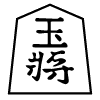Piececlopedia: King
Historical notes
Except for some differences in special moves, the King has remained the same from its earliest days to modern-day Chess. The King has always moved one space in any direction. The ability to castle is a recent modification to the King's powers, though this has precedents in earlier special moves, such as a King's leap. In Chaturanga, which is widely regarded as the earliest form of Chess, the King was called a rajah, which is Sanskrit for king. The Persians called it by the own word for king, which was shah. When the Arabs got Chess from the Persians, they left the name unchanged. When Shatranj, the Muslim form of Chess, spread to Europe, the King's name was latinized as rex, and in other European languages, it was commonly called by the native word for king. For example, it was a roi in French, a König in German, and a rey in Spanish.
Our words Chess and checkmate both come from 'Shah,' the Persian word for King. Checkmate comes from the Persian expression 'shah mat,' which literally means, as Davidson points out, that the King is ambushed. Although 'mat' is also an Arabic word for dead, the expression was in use by the Persians before Chess spread to the Arabs, and it did not mean dead in Persian. Reports that checkmate means the King is dead are mistaken. While the Persian, Arab, and Spanish names for Chess have their roots in the original name of Chaturanga, which is Sanskrit for army, the Latin name of scaccus comes from 'Shah.' This led to the French échecs, the German Schach, and the English chess.
In Shogi, the Japanese form of Chess, the King has the same powers of movement, except that it can't castle, and it is called a Jeweled General. In Xiangqi, the Chinese form of Chess, the King is alternately called a General (jiang) or a Commander (shuai), depending on which side it belongs to, and it is restricted to orthogonal movement within a 3x3 fortress.
Movement
A King leaps (with or without taking) to any orthogonally or diagonally adjacent space. Orthogonally adjacent spaces share a side in common, and diagonally adjacent spaces are connected at a corner and share no sides in common. Diagonally adjacent squares share a common corner, and diagonally adjacent hexagons share no corners in common but are connected by a line that touches a corner of each space. On a suitably checkered board, orthogonally adjacent spaces are different colors, and diagonally adjacent spaces are the same color.
Kings are royal: they may not be moved to a square attacked by a piece of the opponent. When they are attacked by a piece of the opponent, it is called `check', and when in a check that cannot be removed, they are mated, and the game is lost for their owner.
Movement Diagrams
|
|

|
Notes
For more information on the orthodox chess king, see our Illustrated rules of chess or the FIDE laws of chess.In Chaturanga the king moves as usual king, but additionally has the right to make one knight-move during the game, provided that he hasn't been checked before he makes his knight-move. Castling doesn't exist.
In Shatranj the king moves as usual king, but may not castle.
In Xiangqi the king may not leave the 'palace' (a central 3x3 area), and also may not move into the same file (column) as the opposing king (unless there are interposing pieces).
Vocabulary: Royal
The King is a royal piece. In regular Chess, and in most variants, the game is won by checkmating the royal piece. In some variants, it is won by capturing or baring the royal piece. Some variants may include multiple royal pieces. In some of these, the object will be to checkmate any single royal piece. In others, it will be to capture all of your opponent's royal pieces. The main thing about a royal piece is that it is the target in Chess. The object of the game involves it in some way, and capturing or checkmating it is the usual way of winning the game. When the object of the game is to checkmate a single royal piece, it is normally illegal for a player to move in any way that will let his royal piece be captured. When the object is just to capture it, making a move that let's it be captured is usually legal. Although the King is the most commonly used royal piece, any piece can be made royal. In Smess, the royal piece is called the Brain. In Fusion Chess, the King can combine with other pieces to form new royal pieces.
Alternate Images
Click on an image to view the full piece set it belongs to.
Chess
Shogi
|
Xiangqi
Yáng Qí
|
References
Davidson, Henry A. A Short History of Chess, 1949.
Eales, Richard. Chess: The History of a Game, 1985.
This is an item in the Piececlopedia: an overview of different (fairy) chess pieces.
Written by Fergus Duniho and Hans Bodlaender. Diagram by Ben Good.
WWW page created: September 4, 1998. Last modified: April 20, 2003.






